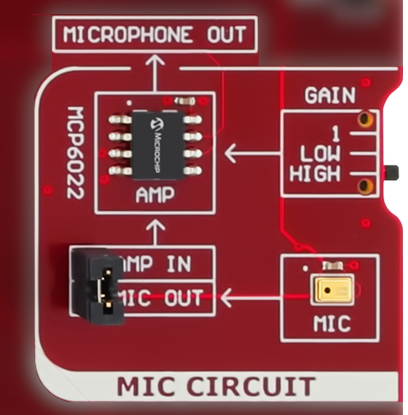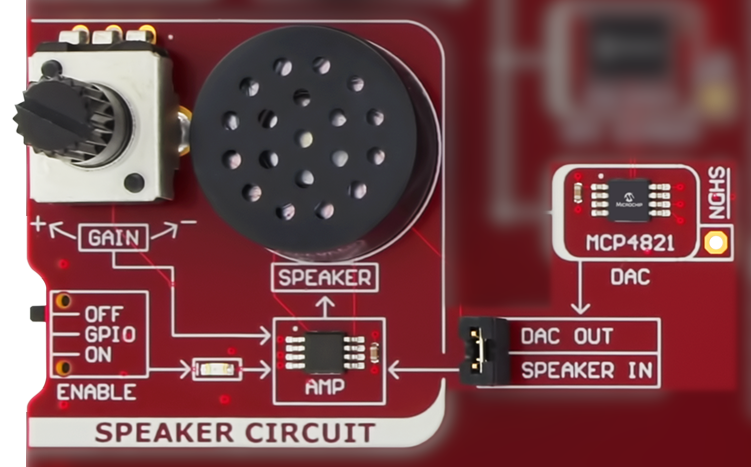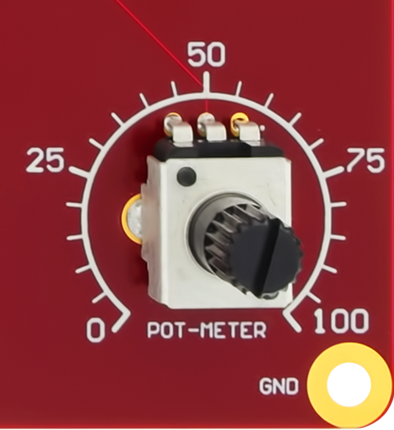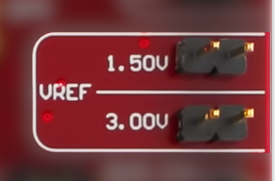7 Analog Peripherals
Microphone Circuit, Speaker Circuit, Rotary Potentiometer, Voltage Reference.
7.1 Microphone Circuit
A MEMS microphone is available as an analog input peripheral on the Explorer and is connected to its amplifier through the 1x2 pin header J206. The dual operational amplifier MCP6022 is used to amplify the signal from the microphone with three selectable gain stages. The gain stages are 1, 221 (low) and 1001 (high), selectable using the slide switch S200. |  |
7.2 Speaker Circuit
The Explorer features an 8Ω, 0.2W miniature speaker. The speaker amplifier input signal is, by default, connected to the output of the 12-bit DAC MCP4821. A Class-D mono amplifier drives the speaker. Volume control is implemented with the rotary
potentiometer R210, which provides an approximate logarithmic
gain control for the amplifier input. Tip: Pin header J202 can be used to remap the speaker
input signal and/or DAC output. |  |
7.3 Rotary Potentiometer
| A 10 kΩ ±20% rotary potentiometer is available to the user as an analog input
(R421). The voltage output varies between 0V and 3.3V. The voltage
output increases when turning the potentiometer clockwise. |  |
7.4 Voltage Reference
 |
| Voltage Reference | Vnom | Vmin - Vmax | Imax |
|---|---|---|---|
| VREF P3V000 | 3.000V | 2.997-3.003V | 20 mA |
| VREF P3V00B | 3.00V | 2.997-3.003V | 5 mA |
| VREF P1V50B | 1.50V | 1.49-1.51V | 5 mA |
